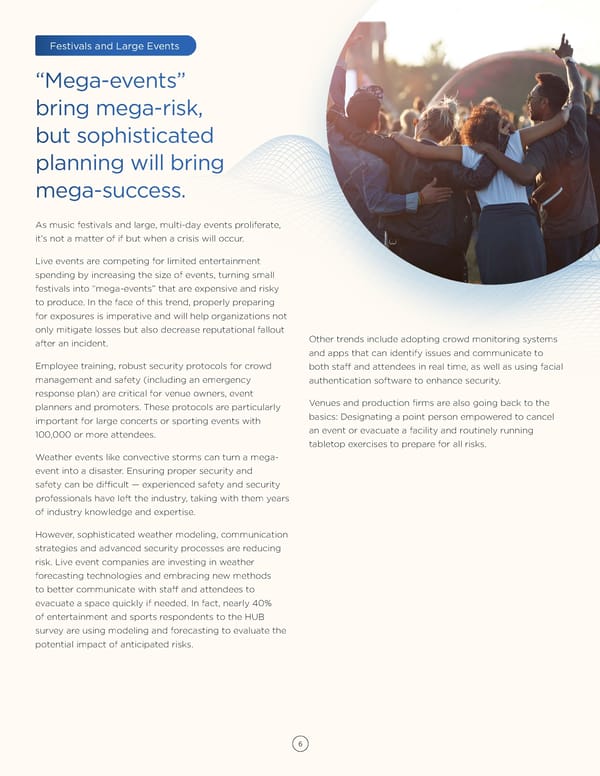Festivals and Large Events “Mega-events” bring mega-risk, but sophisticated planning will bring mega-success. As music festivals and large, multi-day events proliferate, it’s not a matter of if but when a crisis will occur. Live events are competing for limited entertainment spending by increasing the size of events, turning small festivals into “mega-events” that are expensive and risky to produce. In the face of this trend, properly preparing for exposures is imperative and will help organizations not only mitigate losses but also decrease reputational fallout after an incident. Other trends include adopting crowd monitoring systems and apps that can identify issues and communicate to Employee training, robust security protocols for crowd both staff and attendees in real time, as well as using facial management and safety (including an emergency authentication software to enhance security. response plan) are critical for venue owners, event planners and promoters. These protocols are particularly Venues and production firms are also going back to the important for large concerts or sporting events with basics: Designating a point person empowered to cancel 100,000 or more attendees. an event or evacuate a facility and routinely running tabletop exercises to prepare for all risks. Weather events like convective storms can turn a mega- event into a disaster. Ensuring proper security and safety can be difÏcult — experienced safety and security professionals have left the industry, taking with them years of industry knowledge and expertise. However, sophisticated weather modeling, communication strategies and advanced security processes are reducing risk. Live event companies are investing in weather forecasting technologies and embracing new methods to better communicate with staff and attendees to evacuate a space quickly if needed. In fact, nearly 40% of entertainment and sports respondents to the HUB survey are using modeling and forecasting to evaluate the potential impact of anticipated risks. 66
 Entertainment & Sports Risk Management Guide 2025 Page 5 Page 7
Entertainment & Sports Risk Management Guide 2025 Page 5 Page 7